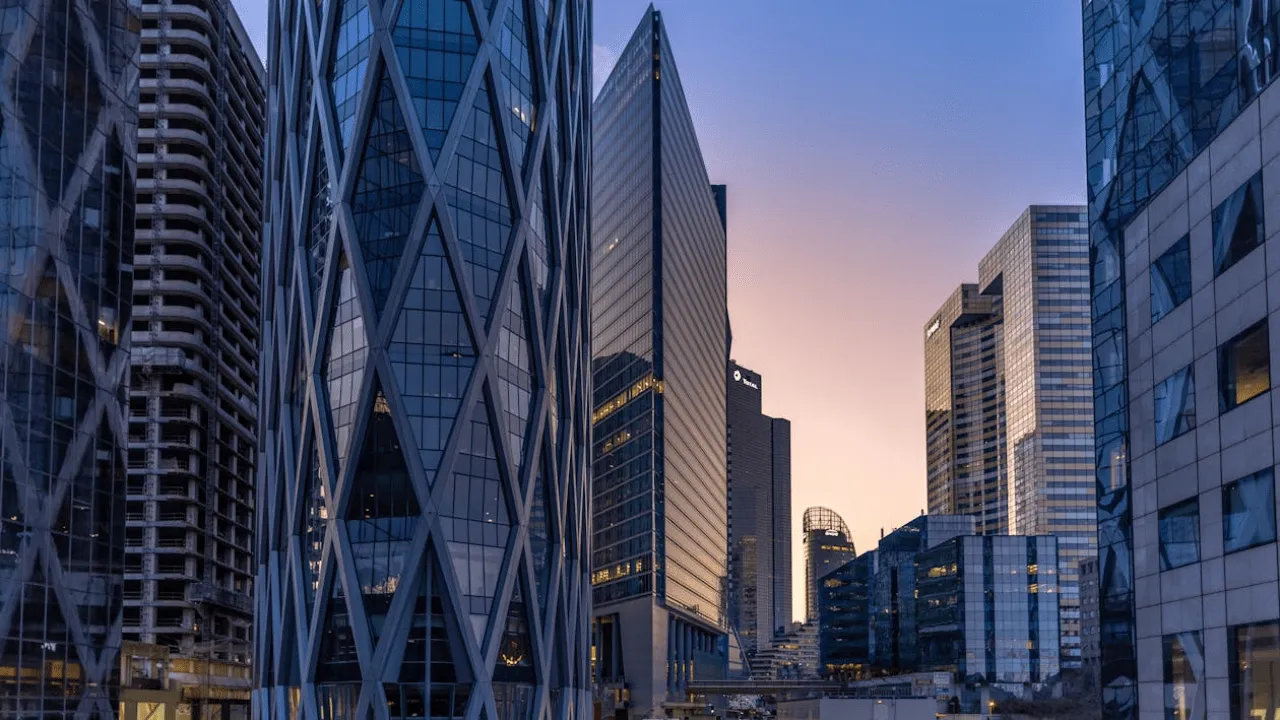What rental demand in Île-de-France: how to map it for a successful investment
📅
12/11/2025
Investing in Île-de-France remains a safe bet for real estate investors, as Rental Demand Remains Strong. With more than 12 million inhabitants, exceptional economic dynamics and constant mobility of workers and students, the Île-de-France region has one of the strongest rental tensions in Europe. But behind this apparent homogeneity, each territory obeys its own market logic: tenant profiles, rents and profitability prospects vary greatly from one city to another.
Understand this Mapping of Rental Demand is therefore the first step in securing and making a profitable investment. Let's analyze together the drivers, key figures and trends to follow in order to identify the most promising areas.

1. The context: why is rental demand so strong in Île-de-France?
Île-de-France has a population density, economic activity and attractiveness that are unparalleled in France. It is a region where we come Study, Work, Start a Business and Find Housing, sometimes temporarily, often permanently. This dynamism creates structural rental tension, maintained by housing needs that exceed the available supply.
A leading economic, student and migratory region
Île-de-France is the Economic Engine of the Country : it represents nearly 30% of the National GDP and houses the headquarters of thousands of companies, from start-ups to major international groups. Each year, this employment area attracts thousands of new workers, French and foreign, generating continuous rental demand, especially in areas near economic centers (La Défense, Saint-Denis, Marne-la-Vallée, Saclay, etc.).
At the university level, the region counts More than 700,000 students divided between the universities of Paris, Nanterre, Créteil, Créteil, Versailles, or even the Grandes Écoles and engineering campuses. The student housing deficit remains glaring, especially in inner Paris, Cachan or Saint-Denis.
Finally, there is a migratory dimension: Île-de-France welcomes new inhabitants from other regions every year, seduced by Professional and cultural opportunities. This constant flow fuels a very diversified rental demand, ranging from furnished studios to family housing.
Recent rental demand figures (vacancy, files per unit)
The data confirms the Extreme Tension in the Paris Region Rental Market. According to LocService (2024) and the Clameur Observatory, we count on average 12 to 15 applications per unit For rent in the region, compared to 5 to 6 on the national average.
Some key figures:
- The Rental Vacancy Rate In Île-de-France Remains Less Than 2%, and often falls to Less than 1% in Paris, Boulogne-Billancourt or Vincennes.
- Les Average Rents Reach approximately €1,200 for a two-room apartment, But Increase to More Than €1 70 in Paris.
- The most tense areas are Paris, the first western ring (Hauts-de-Seine), and some cities in the eastern suburbs (Montreuil, Vincennes, Saint-Mandé).
This imbalance between supply and demand is explained by the Scarcity of Available Housing, but also by increased requirements from tenants (renovated accommodations, well located, close to transport). For investors, that means a Almost Zero Vacancy And a Stable profitability potential Provided that the right type of property is chosen.
The effects of major infrastructure projects (Grand Paris, Olympics, transport)
One of the major drivers of rental demand in Île-de-France is the Urban transformation in progress, in particular with the Grand Paris Express Project. This network of 200 kilometers of new metro lines and 68 stations will connect areas that have hitherto been isolated, boosting the rental market around these future hubs.
Cities like Villejuif, Clichy-sous-Bois, Champigny-sur-Marne, Le Bourget or Saint-Ouen Are already seeing demand grow, anticipating the arrival of new populations and the rise in land value.
Les Olympic Games 2024 have also accelerated the modernization of infrastructure and housing in northern and eastern Paris (Plaine Commune, Saint-Denis, Aubervilliers). These sectors, once considered secondary, are now becoming Areas with High Rental Potential.
Finally, the generalization of Teleworking Has changed behavior: many active people are now looking to move slightly away from the heart of Paris while remaining connected, creating a new dynamic around well-served cities, such as Massy, Melun, Poissy or Versailles.
2. High-demand areas: cartography and typologies
Rental demand in Île-de-France is far from homogeneous. It varies according to tenant profiles, proximity to employment areas, universities, or even the quality of transport. Some territories are under extreme tension, while others offer a balance between profitability and stability.
For an investor, understand this Locative geography Is Essential: It's Not Just About Choosing an Attractive City, But The Right Sector at the Right Time, according to its wealth strategy and investment horizon.
Intra-muros Paris: an ultra-tight demand
Despite a slight post-pandemic downturn, Paris remains the heart of rental demand in the Île-de-France region. The Rental Stock Is Saturated: There Are Until 25 applications per unit, depending on the districts.
Tenants are mainly looking for:
- Of Small Furnished Areas (studios, T1, T2), adapted to students, expatriates and young professionals;
- Housing Close to Universities and Tertiary Centers, especially in the 5th, 6th, 11th, and 15th districts;
- Goods renovated and eco-efficient, with energy regulation becoming a decisive criterion.
On the other hand, the Gross Profitability Y is lower (around) 3 to 3.5%) due to high purchase prices. Paris Remains Above All A Heritage Market, ideal for securing capital and aiming for long-term valuation.
Read our article to find out more about rental investment in Paris.
Small and Mediated Areas: Municipalities to Watch Out for
It is today The Most Dynamic Area for Rental Investors. Cities Well Served by Transport, Close to Paris and Integrated Into the Project of Grand Paris Express, are seeing their demand explode.
The most promising sectors include:
- Saint-Ouen, Clichy, Levallois-Perret (92) : strong attractiveness among managers and young professionals working in Paris or La Défense;
- Montreuil, Vincennes, Ivry-sur-Seine (94) : rapidly changing cities, combining cultural dynamism and accessibility;
- Saint-Denis, Aubervilliers, Pantin (93) : major development centers with the Olympic Games and Urban Renewal, which are still affordable to invest;
- Villejuif, Bagneux, Arcueil (94) : future Grand Paris train stations, high potential for medium-term valuation.
In these areas, the rents are still more affordable than in Paris, but the Rental Tension Is Just As Strong. Profitability Can Reach 4 to 5% gross, or even more on optimized properties (shared apartments, furnished apartments, divisions).
Greater Suburbs and Peri-Urban Areas: Opportunities and Precautions to Take
Long Neglected, the Grande Corona Francilienne Is now attracting a new wave of renters: remote workers, families looking for space, young households looking for housing at a reasonable price.
The Cities to Follow Are Located Along Fast transport axes :
- Versailles, Saint-Quentin-en-Yvelines (78) : solid economic centers and stable family demand.
- Massy, Palaiseau (91) : close to the Saclay Plateau, the heart of research and innovation.
- Melun, Fontainebleau (77) And Poissy, Mantes-la-Jolie (78) : attractive prices, direct train service to Paris.
However, the higher profitability (5 to 6% gross) is accompanied by Increased Vacancy Risks If the property is poorly positioned or too far from transport.
Success therefore depends on a Detailed Analysis of the Local Employment Pool, the mobility of inhabitants and ongoing development projects.
In summary, rental demand in the Île-de-France region revolves around Three Complementary Poles :
- Paris, for security and liquidity.
- The inner suburbs, for balanced profitability.
- The big crown, for medium-term valuation potential.
3. The most sought-after property types and rental segments
Rental demand in Île-de-France is not limited to a question of location. It is also based on the Typology of the Goods Offered, which must correspond to the concrete needs of tenants in the targeted sector: students, young workers, families, or even teleworkers.
Know How to Identify load-bearing segments And adapting its offer not only makes it possible to Reduce the rental vacancy, but also to increase the Net Profitability. Each typology responds to a specific market and requires an adapted investment strategy.
Small areas (studio, T1, T2): students, young workers
Les Small Areas Represent the most sought-after category in the region, especially in Paris and in the inner suburbs.
Les Students and Young Workers Constitutes an important rental pool, often ready to pay more for well-located, functional and furnished housing.
The keys to success in this segment:
- Prioritize proximity universities, schools, train stations or subway stations.
- Opt for Renovated and Furnished Properties, meeting energy standards.
- Bet on the Shared Apartment or Short-Term Rental in very tense areas (Levallois, Boulogne, Montreuil).
Average profitability: 4 to 6% gross, depending on the level of renovation and the type of management.
Family homes: T3 and T4 in residential areas
In the periphery and in the greater suburbs, rental demand is changing. Les Families Are Looking for Bigger Spaces, a pleasant living environment and a good quality/price ratio.
These properties generate less rental turnover and ensure a Stability over the long term.
The most requested areas for T3-T4:
- Versailles, Saint-Germain-en-Laye, Maisons-Laffitte (78) : wealthy families and managers working in Paris.
- Massy, Palaiseau, Antony (91) : proximity to scientific centers and engineering schools.
- Noisy-le-Grand, Champigny, Villemomble (93-94) : developing areas with attractive rents and good school infrastructure.
These accommodations offer a Average profitability of 3.5 to 4.5%, offset by a very low vacancy and simplified management.
Specialized segments: furnished, shared, renovated housing
La Diversification of lifestyles and rental pressure have encouraged the emergence of new strategies:
- The furnished (especially under LMNP status) appeals to young professionals and international students. It allows Increase the rents While Benefiting from a Taxation.
- The Roommate is essential in student areas or close to transport, such as Saint-Denis, Villejuif or Cachan. A Well-Designed Flatshare Can Reach 6 to 7% gross yield.
- Renovated Accommodations Or eco-efficient ones stand out: faced with restrictions on thermal sieves, tenants now prefer properties with a Good Energy Label (A to D).
This “premium” segment guarantees sustained rental demand and a long-term valuation of assets.
In short, the key to success in Île-de-France lies in The adequacy between the typology of the property and the profile of the tenants.
- In the heart of Paris: small and furnished areas.
- On the periphery: family property or shared flats.
- In changing areas: renovated and modern housing.
4. Key indicators to analyze to estimate rental tension
Before investing, it is not enough to identify a “fashionable” city. To assess the strength of a market, it is necessary to rely on Concrete and measurable indicators. This data makes it possible to anticipate profitability, vacancy and the ability of the property to generate constant income over time.
Analyzing Rental Tension in Île-de-France Means Understanding Both Economic dynamics, Tenants' behaviors And Balances between supply and demand. Here are the essential indicators to look out for before investing.
Price per square meter, average rents and rent/price ratio
The first indicator is the Ratio between rent and purchase price. It makes it possible to assess the gross profitability of the property and to compare the areas between them.
In Île-de-France, this balance varies greatly:
- Intra-muros Paris : 10,000 to 12,000 €/m² for an average rent of 25 to 35 €/m², i.e. a gross profitability often less than 3.5%.
- Small Crown (92, 93, 94) : 5,000 to 7,000 €/m² and rents between 18 and 25 €/m², i.e. a profitability of 4 to 5%.
- Grand Crown (77, 78, 91, 95) : 3,000 to 4,500 €/m² and rents between 13 and 18 €/m², i.e. a profitability of 5 to 6%.
One Balanced Ratio Ensures a good return without sacrificing the quality of the property or its liquidity upon resale.
Vacancy rate and number of applications per unit
The Rental Vacancy Rate is one of the most telling indicators of market tension. Below 3%, the market is considered to be very tight.
In Île-de-France:
- Paris and the First Suburbs Have a Rate Lower Than 2%, with sometimes More than 50 applications per unit.
- Some municipalities in Greater Paris (Saint-Ouen, Villejuif, Montreuil) revolve around 3 to 4%, but demand remains strong.
- In the Greater Suburbs, the Vacancy Can Rise To 6 or 7% in underserved areas.
These numbers should be crossed with the Average relocation time : a property re-leased in less than 15 days indicates a very tight and secure market.
Residency time, tenant mobility and socio-economic profile
Tenant stability is a good indicator of Sustainability of the Market.
- In central urban areas, mobility is high: tenants stay on average 2 to 3 years.
- In residential or family areas, the average length of time climbs to 5 to 7 years.
The Socio-economic profile Also plays a major role:
- Sectors with a high concentration of qualified workers or students guarantee regular demand.
- Areas with a diversified economic fabric (tertiary, industrial, university) are more resilient in the face of market fluctuations.
This data is accessible via local housing observatories, INSEE or online rental platforms. For an investor, they form the basis of a Controlled Risk Analysis.
In summary, estimating rental pressure in Île-de-France is based on four main pillars:
- The Ratio rent/price to measure profitability.
- The Vacancy Rate To assess the security of the investment.
- La Relocation speed To anticipate the rental flow.
- The Tenant Profile To adapt the property to real demand.
A project aligned with these criteria maximizes stability, profitability and long-term heritage value.
5. Practical Tips for Taking Advantage of Strong Rental Demand
Strong rental demand, such as that experienced in Île-de-France, offers excellent opportunities for investors. But to Turn This Market Tension Into Sustainable Profitability, it is necessary to adopt a structured approach: choose the right location, adapt the offer to the profile of the tenants and anticipate long-term valuation.
Here are the Best practices To exploit the rental potential of the Île-de-France region while securing your investment.
Choosing a strategic and well-served location
Location remains the number one factor in the success of a rental project. In Île-de-France, it's not just about being close to Paris, but above all about being Connected Effectively to employment areas and to education centers.
Some essential principles:
- Focus on transport : close to the metro, RER, tram or future Grand Paris Express station. Accommodation less than a 10-minute walk from a station can be rented more quickly and more expensive.
- Anticipate urban projects : many municipalities will benefit from an upgrade thanks to new infrastructures (Saint-Denis Pleyel, Champigny, Bagneux, Le Bourget).
- Aim for functional diversity : choose lively neighborhoods, close to shops, schools and green spaces.
A well-placed property guarantees constant demand, an almost zero vacancy and better liquidity for resale.
Adapting the typology of the property to the target audience
One of the secrets of a profitable investment is Think like a tenant. Each zone attracts a specific profile:
- Small surfaces near universities or tertiary centers → students, young workers, expatriates.
- T2 or T3 Close to transport and services → couples without children or families with one child.
- Houses or large apartments On the periphery → families looking for space and stability.
Also adapt your offer to Local demand :
- Furnished or shared flat in areas with high mobility (Paris, inner suburbs).
- Unfurnished for families or residential areas.
- Energy renovation work or modern facilities (Wi-Fi, laundry, storage) to enhance the value of the property and justify a higher rent.
A property designed for its target market is rented more quickly and limits management contingencies.
Do Not Forget About Valuation and Future Resale
Rental Investment is not limited to collecting rent: it is also about Create Value Over Time. In Île-de-France, the potential added value depends directly on the dynamics of urban development.
To maximize evaluation:
- Give priority to Sectors in transformation (Greater Paris, renovated peripheral areas).
- Watch For Them Market trends : new economic centers, campus projects, transport modernization.
- Maintain the property regularly: a home in good condition sells more quickly and better, even during a downturn.
Finally, keep a vision of your assets. A Well Chosen Asset Today Can Become The Basis of a sustainable enrichment strategy, provided you anticipate the ideal moment to resell or refinance.
In summary: investing methodically in a promising market
Rental tension in Île-de-France represents a unique opportunity for savvy investors.
- Analyze Before You Buy, both the area, the type of tenant and the local dynamic.
- Optimize Profitability by working on financing, management and taxation.
- Think long term, because the stability of the Île-de-France market offers incomparable wealth potential.
Conclusion — Understanding the demand for smart investing
Successful rental investment in Île-de-France is not based on luck, but on Detailed understanding of rental demand. In this dynamic, dense and evolving region, every decision counts: choosing the right sector, the right property and the right audience is what makes the difference between an average investment and a truly profitable project.
Île-de-France remains a Territory of Opportunities, driven by powerful drivers: economic attractiveness, solid employment areas, permanent mobility of inhabitants and major infrastructure projects. Housing needs are structurally greater than supply, guaranteeing a Sustainable Rental Tension For years to come.
But this potential requires method and rigor:
- Analyzing key indicators before buying (vacancy, rent, transport, local dynamism).
- Adapting the investment At real demand: students, working people, families or roommates.
- Surround yourself with experts (real estate hunter, broker, manager) to secure each stage.
In summary, understanding rental demand in the Île-de-France region means giving yourself the means to Invest your capital intelligently, to obtain stable profitability and to build a solid wealth over time.
Île-de-France is a demanding market, but for those who know how to read its signals and anticipate its changes, it remains and will remain The Beating Heart of Real Estate Investment in France.

Article rédigé par Mélanie Jacquet, experte immobilière du blog MeCaza.
To go further

10/11/2025
How to make yourself known when you are a real estate hunter?
Visibility, local reputation and digital strategy: learn how a real estate hunter can become known, build credibility and generate more customers.

6/11/2025
Real estate broker and rental investment: why and how to rely on an expert
Using a specialized real estate broker means maximizing the profitability of your rental investment. Financing, negotiation, support: discover how to make it your best ally.

4/11/2025
How to Succeed in Real Estate: The Keys to a Winning Investment
Discover the keys to the success of your real estate project: define your goals, choose the right property, optimize financing and sustainably manage your assets.

